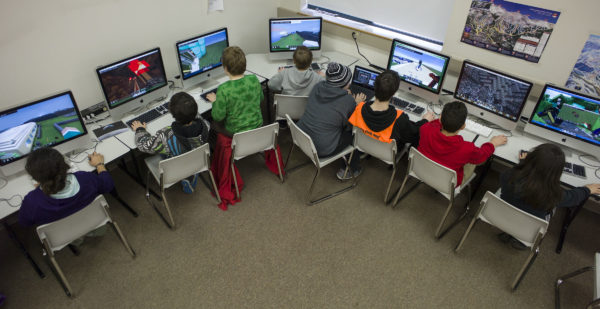To connect with today’s interactive learner, look to these innovative strategies
Today’s students are a uniquely interactive group. Most of the 80 million Americans who are part of the millennial generation—a group that comprises the lion’s share of today’s student population—can’t remember a time when they didn’t have instant access to the internet. Most of them grew up playing video games, and ever since they can remember, they’ve been in constant contact with friends via social media platforms and text messages. A growing number of today’s instructors also fall into this group.
Educators who want to reach students who favor interactive communication know that integrating digital tools into their lesson plans can be an effective strategy, and many have incorporated technology tools into the classroom in one way or another. But to make a real difference, educators have to integrate technology in a meaningful way. It’s not sufficient to just use social media platforms as an alternate communication venue or post schedules on a class Facebook page
So how can educators use technology in a more meaningful way? Here are three methods educators are successfully using to connect with a new generation of students in the classroom.
Gamify lessons
Friendly competition can improve focus and drive better results, which is why “gamification” is a hot trend in corporate training and educational circles. Teachers can “gamify” lessons by integrating competition into classroom presentations in a number of ways. For example, a gamification feature in presentation software can enable educators to set up teams or allow individual students to respond to embedded questions and display aggregate results on a screen; some software solutions also feature a leaderboard so everyone can monitor progress.
The types of games educators can incorporate in their classrooms varies widely, from quiz show-type games that allocate points based on correct responses and speed in answering questions to wagering-style competitions, in which teams can bet amassed points on their ability to provide a correct answer to questions. Students can provide answers using a keypad that comes with the software or an app on their mobile phones. A gamification approach is highly effective in getting all students involved in classroom activities and providing educators with data they can use to assess student progress.
Turn lectures into a 2-way conversation
Students who are used to highly interactive communication often have difficulty adjusting to traditional classroom lectures, where they are expected to silently take notes while the instructor speaks. Educators who are looking for new ways to engage students can turn top-down lectures into two-way conversations with technology. By embedding questions into presentation slides and allowing students to transmit answers via response technology, teachers can give students a voice in the classroom.
This approach is also useful for instructors who need to gauge students’ grasp of the topic on a real-time basis. When teachers embed questions into presentations and ask students to respond, they can display the results in chart form right in the presentation slide, which allows the instructor to assess the aggregate level of knowledge. Questions can be phrased as multiple choice, yes-or-no, or even open-ended—a format designed to assess conceptual understanding or enable the use of problem-solving techniques to arrive at the correct answer.
Next page: Crowdsource to connect with the interactive learner
Use peer instruction to enhance the learning experience
Harvard Professor Eric Mazur pioneered a learning strategy known as “peer instruction,” a proven methodology that encourages direct student participation in learning exercises and harnesses pupils’ collective knowledge to deliver measurable improvements in learning. Peer instruction is similar to crowdsourcing in that it leverages group wisdom to reach goals that individuals can’t easily achieve on their own.
Crowdsourced learning is an excellent strategy for students who thrive in interactive settings. It allows students to actively participate in the learning process, communicating with fellow students to explore solutions and formulate responses. Learning software that enables instructors to embed questions in presentations and tally aggregate responses can facilitate peer instruction.
Instructors who are looking for ways to connect with a new generation of more technology-focused students are introducing fresh learning techniques and digital technologies into their classrooms—and achieving excellent results. They are analyzing what drives engagement and knowledge retention among today’s interactive learner and creating lesson plans that bridge the gap between traditional learning methods and the more interactive style to which modern students are accustomed.
By integrating gamification principles into lesson plans, teachers are able to capture and hold students’ attention. Turning traditional lectures into an interactive conversation is helping today’s instructors give pupils a voice in the classroom. And incorporating peer learning techniques is helping educators facilitate collective problem-solving while ensuring students retain knowledge.
Interactive technology can play a key role in helping instructors revamp lesson plans to appeal to today’s students. With presentation software that allows teachers to gamify lessons, embed questions, display results, and spark conversations, classroom technology can help educators foster competition and facilitate communication for a new generation of students.
- TC- What student choice and agency actually looks like - November 15, 2016
- What student choice and agency actually looks like - November 14, 2016
- App of the Week: Science sensor meets your smartphone - November 14, 2016

